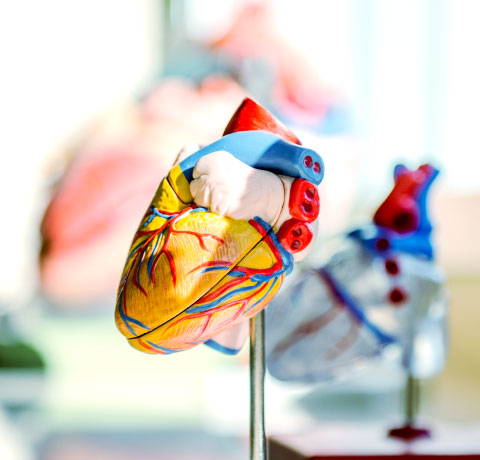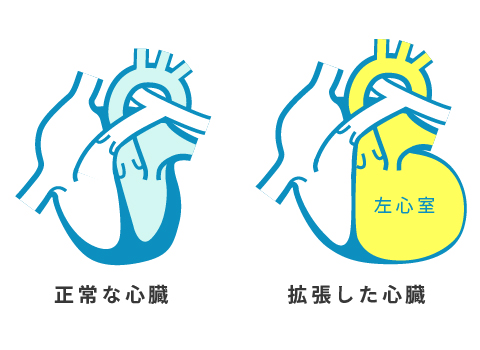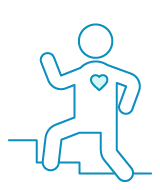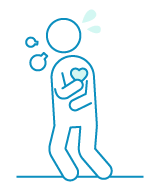ABOUT CARDIOMYOPATHY
What is Dilated Cardiomyopathy?
dilated cardiomyopathyindicates word or phrase being defined

The heart pumps blood throughout the body by alternately contracting and dilating. Idiopathic dilated cardiomyopathy (hereinafter referred to as dilated cardiomyopathy) is a disease in which the ability of the muscles of the heart (especially the left ventricle) to contract is reduced and the left ventricle becomes dilated.
As the heart gradually enlarges and the myocardium thins, the left ventricle dilates further to compensate for the weakened ability of the myocardium to distribute blood throughout the body. It is difficult to stop the dilation of the myocardium with heart failure drugs, and is designated as an intractable disease by the Japanese government.
Idiopathic Dilated Cardiomyopathy (Designated Intractable Disease 57) - Intractable Disease Information Center (nanbyou.or.jp)
The enlargement of the heart due to heart failure is called 'cardiac remodeling.
The heart is made up of a bag of muscles that repeatedly contracts and expands to pump blood throughout the body. If there is a problem with the heart muscle or with the functioning of the heart valves, the heart will not be able to pump enough blood throughout the body. If the heart is not pumping enough blood to meet the body's needs, the heart will expand to compensate and maintain cardiac output.
Although the heart's ejection fraction is temporarily maintained by the enlargement of the heart, this places a greater burden on the heart, which further deteriorates cardiac function and leads to further cardiac enlargement. This vicious cycle is called cardiac remodeling, and it is the most significant factor in the worsening of heart failure, regardless of the cause of the disease.

Symptoms of Heart FailureAbout

Heart failure is a condition in which the heart is unable to pump sufficient blood throughout the body.
At the beginning of heart failure, symptoms such as "palpitations become intense" and "breathing becomes difficult" when exercising. As the symptoms worsen, "breathing becomes labored and it is difficult to walk," and even "shortness of breath even when at rest.
There are a number of causes of heart failure. Examples include valvular heart disease, myocardial infarction, and idiopathic dilated cardiomyopathy.
Although treatment with drugs is initiated first, heart failure often worsens gradually in dilated cardiomyopathy.
The reality is that when heart failure becomes severe, the only effective treatment is an assisted artificial heart or heart transplant.
We are particularly focused on a disease called dilated cardiomyopathy and are developing products to treat heart failure before it becomes severe.

NYHA Classification
The degree of symptoms associated with heart failure is classified based on the ability to perform activities of daily living.
They are classified as I, II, III, and IV according to degree.
-

I
Cardiac disease but no limitation in physical activity. Symptoms do not occur with daily activities.
-

II
Mild limitation of physical activity. Asymptomatic at rest, but fatigue, dyspnea, and other symptoms appear with daily physical activity.
-

III.
Highly restricted physical activity. Asymptomatic at rest, but symptoms appear with less than routine physical activity, such as walking on a flat road.
-

IV
Any physical activity is restricted. Symptoms of heart failure and anginal pain appear even at rest. These symptoms are exacerbated by the slightest physical activity.
Comparison of Cardiac Support Net treatment with non-pharmacological therapies currently available in Japan
| advantage | disadvantage | Relation to cardiac supportive care | |
|---|---|---|---|
| Ventricular Resynchronization Therapy | Efficacy in patients with intraventricular conduction disturbances and dyssynchrony |
About 30% of cases have poor therapeutic effects. Ineffective in cases without conduction defects or dyssynchrony |
It is not an exclusive adaptation, but a complementary one |
| Mitral valve plasty and replacement | Stops regurgitation into the left atrium due to mitral regurgitation and increases cardiac output | Invasive surgery with cardiac arrest under artificial heart-lung use | Co-used in other cardiac supportive care trials, with added cardiac remodeling effects |
| left ventriculoplasty (Batista Surgery) |
Very few effective cases | Most cases resulted in re-dilation and heart transplantation; contraindicated by AHA guidelines | nashi (Pyrus pyrifolia, esp. var. culta) |
| Implantable Assistive Cardiac Devices | Treatment effects are significant. |
High complication rates (embolism, hemorrhage) Highly restricted as it is only applicable to patients indicated for transplantation |
This test device is indicated before an artificial heart device is indicated |
| heart transplant |
Treatment effects are significant. High quality of life |
Immunosuppressants are essential. Shortage of donors (about 60 cases per year) |
This study device is indicated at the NYHA-III stage prior to transplantation |
| Ventricular Resynchronization Therapy |
advantage Efficacy in patients with intraventricular conduction disturbances and dyssynchrony |
|---|---|
|
disadvantage
About 30% of cases have poor therapeutic effects. |
|
|
Relation to cardiac supportive care It is not an exclusive adaptation, but a complementary one |
|
| Mitral valve plasty and replacement |
advantage Stops regurgitation into the left atrium due to mitral regurgitation and increases cardiac output |
|
disadvantage Invasive surgery with cardiac arrest under artificial heart-lung use |
|
|
Relation to cardiac supportive care Co-used in other cardiac supportive care trials, with added cardiac remodeling effects |
|
| left ventriculoplasty (Batista Surgery) |
advantage Very few effective cases |
|
disadvantage Most cases resulted in re-dilation and heart transplantation; contraindicated by AHA guidelines |
|
|
Relation to cardiac supportive care nashi (Pyrus pyrifolia, esp. var. culta) |
|
| Implantable Assistive Cardiac Devices |
advantage Treatment effects are significant. |
|
disadvantage
High complication rates (embolism, hemorrhage) |
|
|
Relation to cardiac supportive care This test device is indicated before an artificial heart device is indicated |
|
| heart transplant |
advantage
Treatment effects are significant. |
|
disadvantage
Immunosuppressants are essential. |
|
|
Relation to cardiac supportive care This study device is indicated at the NYHA-III stage prior to transplantation |

CONTACT
Contact Us
About the Cardiac Support Net treatment and,
Clinical trials, etc.
Please feel free to contact us for any inquiries.

